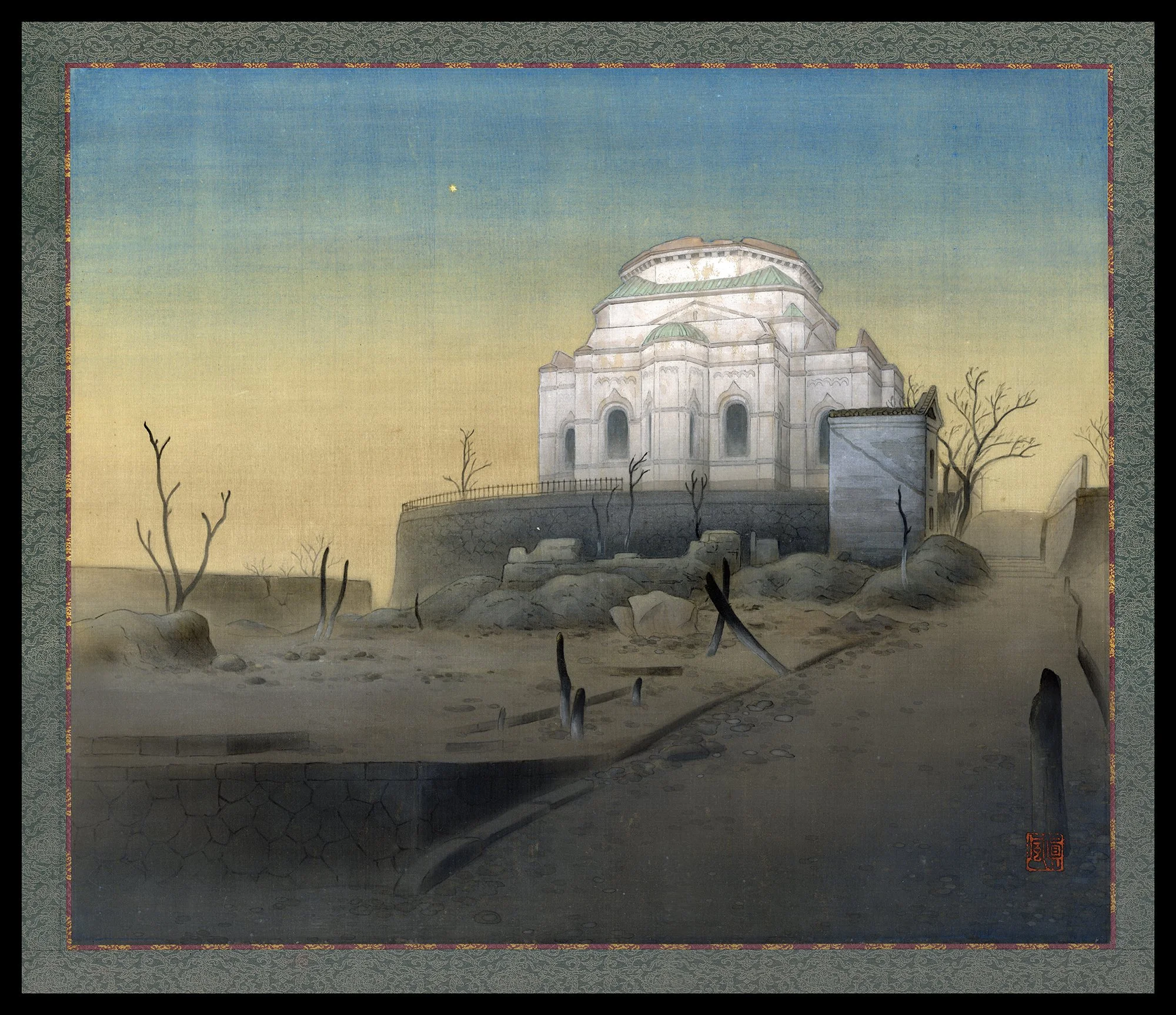Details
The Great Kanto Earthquake of 1923, a catastrophic event in Japanese history, profoundly impacted the realms of photography and printmaking. In its aftermath, photographers documented the widespread destruction, capturing haunting images of the devastation and human resilience, reflecting a new era of social consciousness and realism in Japanese photography. The disaster also played a pivotal role in revitalizing traditional woodblock printmaking, inspiring artists to create powerful and emotionally charged prints that depicted the earthquake's aftermath, offering a bridge between the past and present by blending traditional techniques with contemporary subject matter. This seismic event thus left an indelible mark on Japanese art, pushing it towards greater social engagement and a fusion of modern and traditional artistic sensibilities.
The damaged Nikorai-do (Nikolai Cathedral) in Tokyo’s Kanda neighborhood became an icon of the devastation of the earthquake. During the quake, the main bell tower fell on the dome, resulting in its collapse. The sight of this imposing structure’s collapsed dome elicited a great response from documentarians and artists who were compelled to document this damage. In this Nihon-ga style painting, the post-earthquake cathedral is shown in a hauntingly realistic yet ethereal vision. The highly detailed painting showcases the foreign white stone structure in the light of dusk or dawn, illuminating the cathedral and the surrounding terrain in astonishing realism. The irregular remains of charred trees populate the house of worship’s approach where parishioners would normally inhabit the grounds, greatly contributing to the surreal quality of the composition.
Connoisseur's Note
Nihon-ga style paintings documenting catastrophes such as the great Kanto earthquake are quite rare. As one might imagine, a tragic subject would not have been a popular motif to immortalize in a large-scale painting rendered in such astonishing realism. This painting was most likely produced for an exhibition of Nihon-ga where its haunting realism, emphasized by the subject, would have been rated quite highly.


